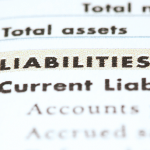Standard & Poor’s, getting its first shot in open court at U.S. Justice Department claims it should pay as much as $5 billion in civil penalties, will defend itself by arguing reasonable investors wouldn’t have relied on its “puffery” about credit ratings.
Lawyers for the McGraw Hill Financial Inc. unit are scheduled to argue today before U.S. District Judge David Carter in Santa Ana, California, that the government failed to adequately support allegations that the company defrauded investors, including federally insured financial institutions, by knowingly understating the credit risks of securities linked to residential mortgages.
S&P said in its request to dismiss the case that the government can’t base its fraud claims on S&P’s assertions that its ratings were independent, objective and free of conflicts of interest because U.S. courts have found that such vague and generalized statements are the kind of “puffery” that a reasonable investor wouldn’t rely on.
The government also claims fraud “despite the fact that other rating agencies issued ratings identical to those of S&P on the same securities at issue, and despite the fact that its views were consistent with those of virtually every other market participant,” the company said in the April 22 filing.
Default Surge
The U.S. sued New York-based S&P on Feb. 4, alleging its credit ratings for residential mortgage-backed securities and collateralized-debt obligations that included those securities, contrary to what the company told investors, were based on a desire to win more business from issuers of the securities rather than on the credit risk of the investments.
A surge in defaults of high-risk mortgages packaged in securities that had helped fuel the U.S. housing boom until 2007 led to the country’s longest recession since 1933. S&P rated $2.8 trillion in residential mortgage-backed securities from September 2004 through October 2007 and $1.2 trillion worth of CDOs, according the government’s complaint.
S&P also argued that the Justice Department’s allegation that its ratings of 33 CDOs in 2007 didn’t reflect its “true opinion” about their credit risks lacks foundation because the government doesn’t assert what the actual credit risk of the CDOs was. The government also fails to support its claim that the ratings weren’t S&P’s true opinion at the time, S&P said.
In evaluating S&P’s request to dismiss the case, the judge will assume that everything the government said in its complaint is true. If the judge finds the government’s allegations lack the legally required specificity, he may give the Justice Department’s lawyers an opportunity to address the deficiencies in a revised complaint.
Analysts’ Motive
In its 119-page Feb. 4 complaint, the Justice Department cited meetings, messages and memos that it said showed S&P’s analysts assigned investment-grade ratings to securities based more on a desire to win business than to be accurate.
The lawsuit was brought by U.S. Attorney Andre Birotte Jr. in Los Angeles under the 1989 Financial Institutions Reform, Recovery and Enforcement Act, a law passed after the savings and loan crisis to allow the government to seek civil penalties for losses of federally insured financial institutions caused by fraud.
S&P argued in its April 22 filing that it’s “ironic” that the government seeks penalties for losses by the same banks, Bank of America Corp. and Citigroup Inc., that were creating and selling the CDOs.
“The complaint charges S&P with intending to defraud these financial institutions about the likely performance of their own products,” the company said.
Banks create collateralized debt obligations by bundling bonds or loans into securities of varying risk and return. They pay ratings firms for the grades, which investors may use to meet regulatory requirements.
The case is U.S. v. McGraw-Hill Cos., 13-cv-00779, U.S. District Court, Central District of California (Santa Ana).





















 Quantifying Social Inflation: How Swiss Re Developed an Index
Quantifying Social Inflation: How Swiss Re Developed an Index  One Meter Sea Level Rise by 2100 Could Affect Over 14M People, $1T Worth of Property
One Meter Sea Level Rise by 2100 Could Affect Over 14M People, $1T Worth of Property  Cyber Threats, Climate and Business Interruption Risks Top Insurance Buyers/Sellers Concerns
Cyber Threats, Climate and Business Interruption Risks Top Insurance Buyers/Sellers Concerns  Swiss Re Execs Sleeping Well After $2.4B Q3 Reserve Boost
Swiss Re Execs Sleeping Well After $2.4B Q3 Reserve Boost 